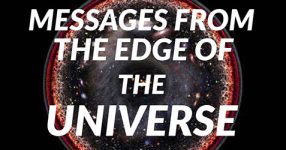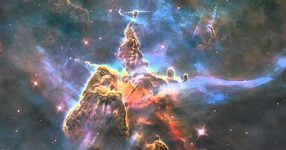If you’ve ever pondered the enigmatic cosmic wonders known as black holes, prepare to embark on a journey that defies the ordinary. “Black Holes: We Thought Wrong” takes you beyond the confines of traditional understanding, shedding light on the mind-bending truths about these celestial behemoths. Let’s dive into the intriguing universe of black holes and how our preconceived notions have been turned on their heads.
The Birth of Black Holes: A Cosmic Spectacle
Black holes, the elusive cosmic creations, emerge from the cataclysmic demise of massive stars. These stellar remnants challenge the very fabric of space-time, defying our conventional comprehension. Their size varies dramatically, ranging from around 3.8 times the mass of our Sun to colossal entities billions of times heavier. But what makes them truly fascinating is the presence of an event horizon, a boundary where not even light can escape.
Within the clutches of a black hole lies a singularity, a point where gravitational forces become unimaginably intense, essentially halting the passage of time itself. As matter succumbs to this gravitational pull, an enthralling cosmic dance ensues. The speed of light acts as a cosmic speed limit, resulting in the formation of an accretion disk – a swirling vortex of matter. This searing disk generates intense temperatures, leading to mass-energy conversions and the birth of quasars, celestial phenomena that outshine entire galaxies.
The Cosmic Ballet: Momentum, Friction, and Relativistic Jets
Within the chaotic environment of accretion disks, matter collides, generating friction that releases excess angular momentum. Simultaneously, black holes unleash relativistic jets, powerful streams of particles guided by mysterious magnetic forces. While these cosmic giants vary in size, some, like TON 618, boasting a staggering 66 billion solar masses, remain elusive due to technological constraints and observational biases.
Navigating the cosmic landscape proves challenging, as Malmquist Bias distorts our perception of distant, brighter black holes. Despite these hurdles, groundbreaking initiatives such as the Event Horizon Telescope provide glimpses into the enigmatic realms of these cosmic enigmas, unveiling the intricate dance of matter and forces around them.
Black Holes: The Cosmic Interrogators
In essence, black holes serve as cosmic interrogators, probing the very foundations of our understanding of space, time, and matter. Technological advancements and evolving observational capabilities promise deeper insights into the profound mysteries concealed within these celestial phenomena. The dynamic interplay of matter, momentum, and gravitational forces around black holes unfolds as an intricate cosmic tapestry, beckoning exploration and enlightenment.
As we unravel the mysteries of black holes, we realize that “Black Holes: We Thought Wrong” directed by Alex McColgan invites us to question our preconceived notions and embark on a journey of discovery, embracing the cosmic enigmas that challenge the boundaries of our knowledge.
In conclusion, black holes continue to defy our expectations, reshaping our understanding of the universe in ways we never thought possible. Their birth, the cosmic ballet that surrounds them, and their role as cosmic interrogators remain subjects of fascination and exploration. So, join us on this cosmic voyage as we delve deeper into the mysteries of black holes, pushing the boundaries of our comprehension and redefining what we thought we knew.












